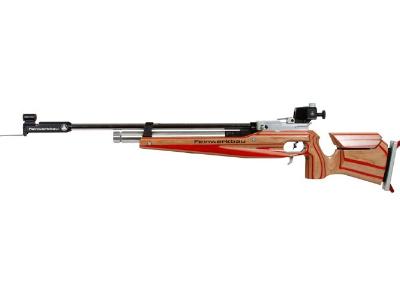
Air Rifle
Versatile air rifle built for target shooting, plinking, or small game – power, accuracy, and fun in every shot.
Unlocking the Power: Demystifying How Air Rifles Work
Awareness: The Intrigue of Air Rifles
Ever wondered how a simple pump or CO2 cartridge can launch a pellet with surprising accuracy and power? The world of air rifles is more complex and fascinating than you might think. Many are curious about the mechanics, asking, “Air rifle how does it work?” This article will break down the science and technology behind these popular firearms, guiding you through the inner workings and helping you understand the different types available.
Interest: Exploring the Mechanisms
At its core, an air rifle uses compressed gas to propel a projectile. But the method of compression varies significantly, leading to different types of air rifles, each with its own advantages and disadvantages. Let’s explore the primary mechanisms:
- Spring-Piston: These rifles use a powerful spring that is compressed when the rifle is cocked. When released, the spring drives a piston forward, compressing air in a cylinder. This compressed air then forces the pellet down the barrel. A classic example is the spring-piston system, known for its simplicity and reliability.
- Pneumatic (Pump): Multi-pump pneumatic air rifles require the user to manually pump air into a reservoir. The more pumps, the higher the pressure, and consequently, the greater the power. Single-stroke pneumatic rifles compress the air in one stroke.
- CO2: These rifles use pre-filled CO2 cartridges. The gas is released when the trigger is pulled, propelling the pellet. CO2 rifles offer consistent power and are easy to use, but their performance can be affected by temperature.
- Pre-Charged Pneumatic (PCP): PCP air rifles have an onboard reservoir that is filled with compressed air from an external source, such as a hand pump or a scuba tank. They offer high power and accuracy, with multiple shots per fill. According to Airgun Magazine’s explanation of PCPs, these are favored for hunting and target shooting due to their consistency.
Understanding these mechanisms is crucial for choosing the right air rifle for your needs. The power of an air rifle is measured in foot-pounds of energy (FPE). For example, a typical .177 caliber air rifle might produce around 10-12 FPE, while a .22 caliber rifle could generate 15-20 FPE or more.
Desire: Experience the Benefits and See the Possibilities
Imagine the satisfaction of hitting a target with pinpoint accuracy, or the thrill of a successful small-game hunt. Air rifles offer a range of benefits:
- Target Practice: Air rifles are excellent for honing your shooting skills. Their lower power compared to firearms makes them safer and more accessible for backyard practice.
- Pest Control: In many areas, air rifles are permitted for controlling nuisance animals like rodents and birds.
- Small-Game Hunting: Larger caliber air rifles are suitable for hunting small game such as squirrels and rabbits.
- Cost-Effective: Pellets are significantly cheaper than firearm ammunition, making air rifles an economical option for recreational shooting.
Consider the experience of John S., a satisfied customer: “I was always curious about air rifle how does it work, and after getting a PCP rifle, I’m amazed by the power and accuracy. It’s perfect for target practice in my backyard, and I’ve even used it for pest control around my garden.”
Comparing different air rifle types, a spring-piston rifle offers simplicity and affordability, while a PCP rifle provides superior power and accuracy. The best choice depends on your individual needs and budget.
Action: Take the Next Step
Ready to experience the world of air rifles for yourself? Visit our online store to browse our extensive selection of air rifles, pellets, and accessories. We offer expert advice and competitive prices to help you find the perfect air rifle for your needs. Click here to explore our collection and start your air rifle adventure today!
CONTACT US YOUTUBE